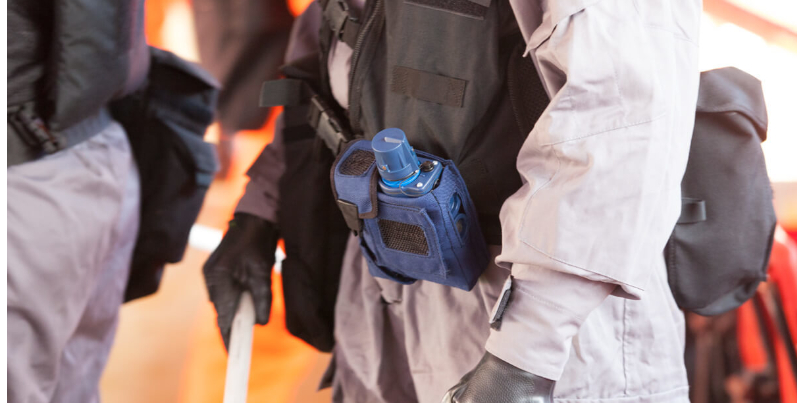 One of the most common challenges that CBRNe and HazMat instructors face in delivering hands-on chemical hazard training is the extensive time that it can take to plan, set up and oversee their scenarios.
One of the most common challenges that CBRNe and HazMat instructors face in delivering hands-on chemical hazard training is the extensive time that it can take to plan, set up and oversee their scenarios.
Even once an exercise is up and running, the practical demands of keeping tabs on every detail and delivering vital information to students via verbal or written cues, can leave precious little time for observing trainees’ actions and responses.
Now, with the help of new intelligent electronic chemical simulator training tools, trainers have the freedom to simply 'press go’ and to focus their full attention on their students, confident in the knowledge that the exercise will be executed exactly as planned.
Training with the LCD3.3 / M4A1 JCAD-SIM
Simulator-based chemical training provides a powerful way for students to experience all of the behavior and effects of chemical warfare agents (CWAs), toxic industrial substances (TICs) and false positives in an environment that is both highly realistic and completely safe.
Argon Electronics’ simulator for the Smiths Detection LCD3.3 and LCD3.3FR (the LCD3.3 SIM, also known in the USA as the M4A1 JCAD) offers some powerful advantages for both student and teacher.
For the trainee, there is the opportunity to step into a training environment that is as real as it gets - and because potentially harmful chemical simulants have been replaced with harmless electronic equivalents, students can experience all of the physical challenges of chemical hazard response with zero safety risk.
Hyper-realistic chemical training
Being able to replicate real-life in the training environment is a hugely important factor.
In training with simulator tools that look, feel and behave exactly like actual operational detectors, students can build trust in their equipment and have confidence in the readings that they obtain.
The LCD3.3 SIM has the same appearance, the identical menu structure and the exact feel and functionality as the real Smiths Detection device.
It also replicates all of the behaviour and responses of the original detector - from cumulative dose and dose alarms to the depletion of sieve packs and batteries and responding to the effects of wind and temperature.
Set-up chemical scenarios with ease
For the trainer, devising chemical exercises using simulators is quick and simple, with the setting up of a scenario taking as little as ten minutes.
An instructor remote offers complete control in deciding the effectiveness of the decontamination drills and determining the precise amount of remaining contamination.
Other external factors such as persistency, the effects of wind or temperature, component depletion or unit failure can also be easily simulated all within the one device.
Then, when it is time to move on to another scenario, the controller can be instantly reset and the next exercise can begin. The instructor control also enables simulation of consumable use such as Sieve Pack.
Versatile training options
The LCD3.3 SIM offers the versatility of being compatible with other simulators manufactured by Argon Electronics, (the AP2C-SIM, AP4C-SIM, CAMSIM, LCD3.2e-SIM, RAID-M100-SIM and CP100i-SIM) which means instructors can simulate the use of multiple detection instruments within the one scenario.
The simulator is also fully compatible with Argon’s PlumeSIM system, making it quick and easy to deliver instrumented collective wide area field exercises and table-top CBRNe training.
Powerful After Action Review (AAR)
A core feature of effective chemical training is providing trainees with the opportunity to safely make mistakes.
The LCD3.3 SIM monitors every aspect of the student’s use of the device in real-time and provides instant visual feedback whenever any type of mishandling has occurred.
At the conclusion of the exercise that information can then be reviewed and discussed so trainees can further develop their knowledge and technical skill.
Enhanced chemical hazard response
In the challenging and unpredictable CBRNe environment, extensive hands-on experience is an essential factor in ensuring personnel have the know-how and the confidence to handle the unexpected.
Simulator-based training offers a powerful, engaging and compelling way to transfer key information from the classroom to the field and to do so in a way that is both highly realistic and completely safe.





